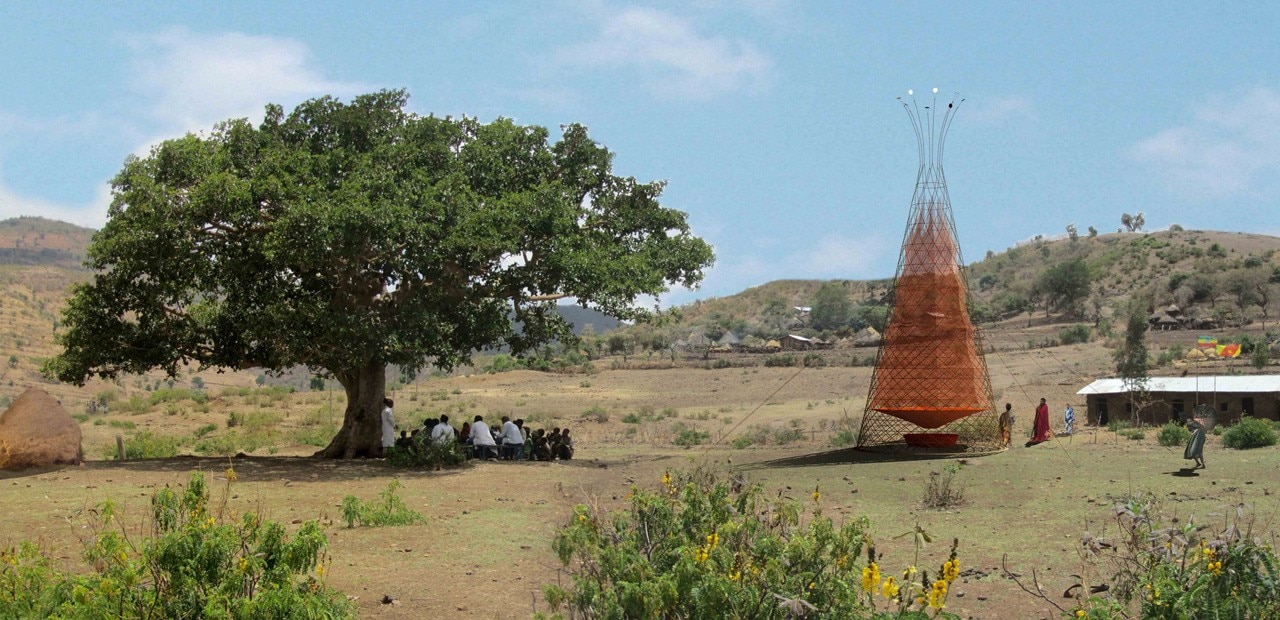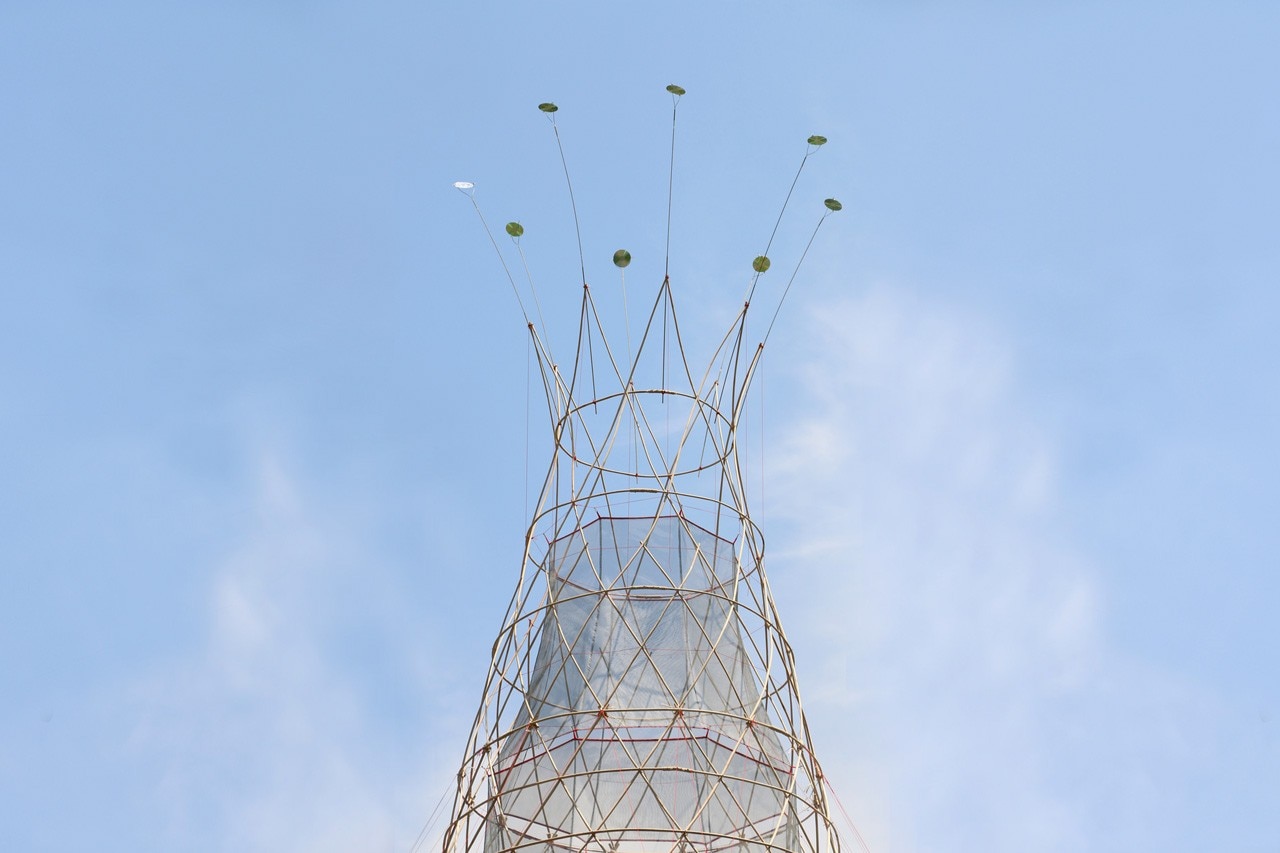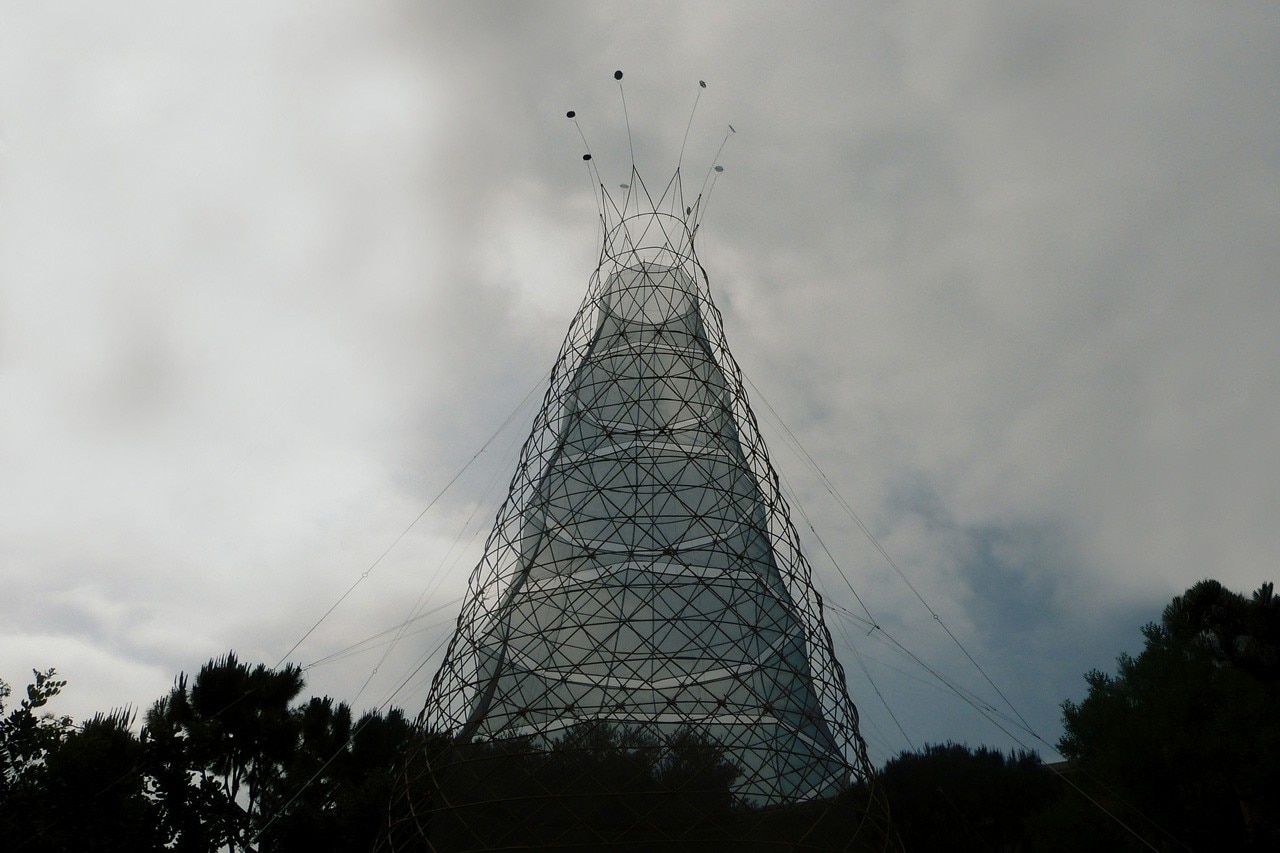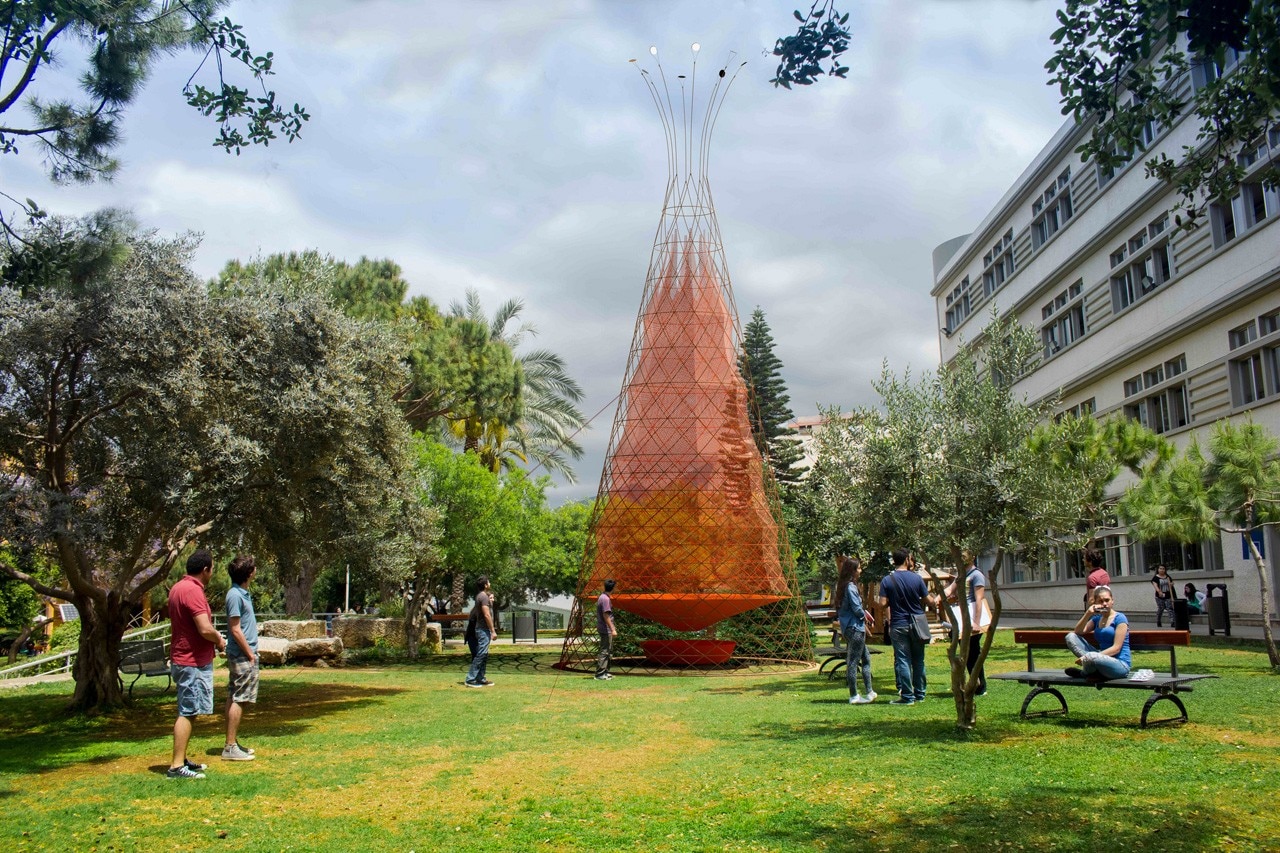
Warka Water is a vertical structure with a special fabric hanging inside that collects potable water from the air. Comprised of local materials and built and easily looked after by villagers themselves, it is inexpensive to produce and maintain. With the tower, water can be taken directly and locally from the environment without wasting energy in transport. The harvested water can be used as drinking water and stored eventually for other purposes like irrigation.
The Warka Water is designed for multiple harvesting methods: dew, fog and rain collection, providing varying amounts of potable water throughout the year. Beyond solving water needs, the project wants to invigorate the local economy through manufacturing initiatives and give children opportunities to invest their time in education and other productive activities.
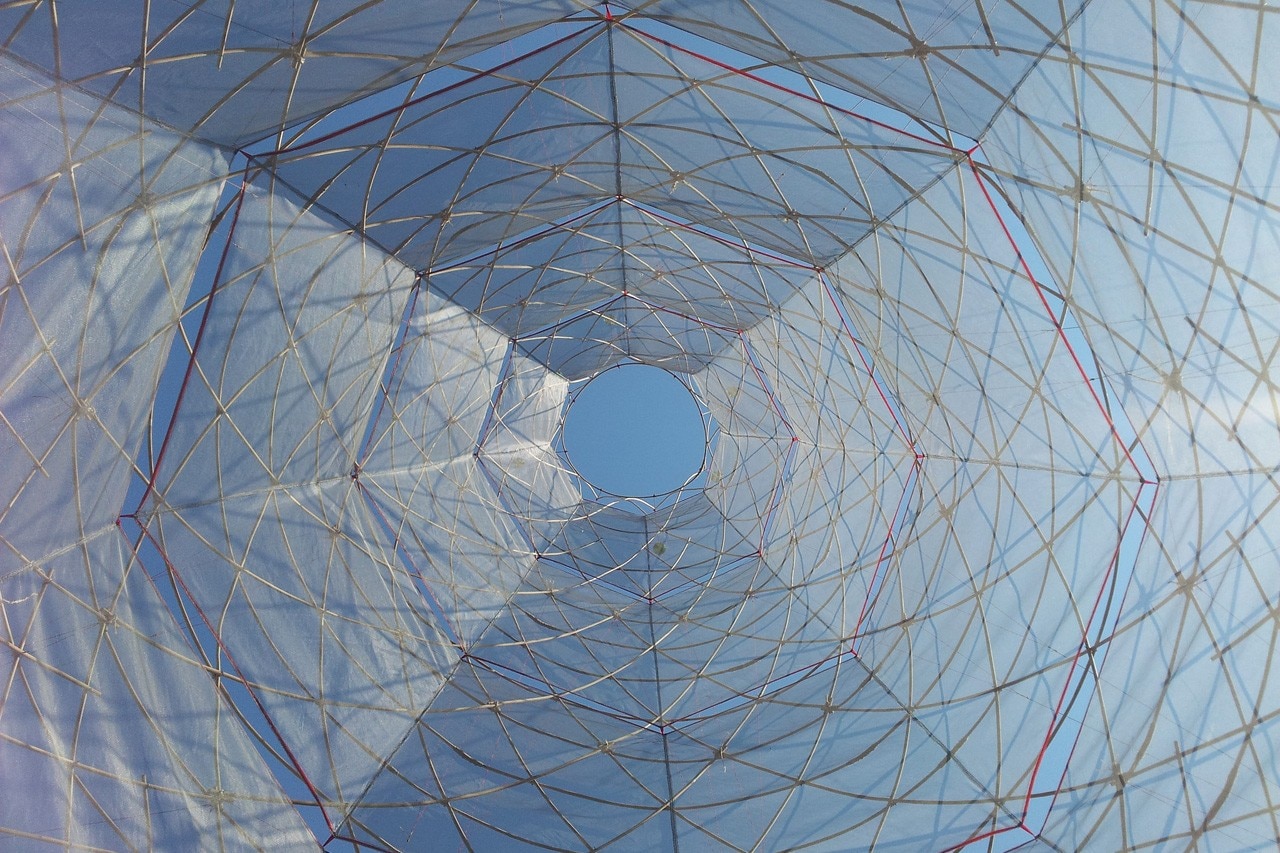
Warka Water
Design: Architecture and Vision
Objectives: harvesting water from the sky
Construction: 6 days, 6 people (by hand no electrical power machinery)
Assembly: 3 hours, 6 people
Structure: modular lattice framework made from natural fibres
Weight: 80 kg
Materials: bamboo, cables, mesh
Dimensions: height 13 m - footprint Ø 5 m, including fixture cables Ø 12 m
Cost: one tower should cost ~ 1000 $
Maintenance: easy to be repaired


